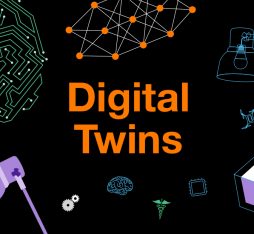Edge computing
Edge computing is a new stage in the evolution of cloud computing. It consists in shifting remote data storage and processing from distant servers to the edge of the network. Thus, the data no longer systematically pass through the “cloud”, but are processed locally, close to the people or machines that produce and/or consume them.
The aim of this processing at the “edge” of the cloud, which supersedes the older concept of fog computing, is to absorb the demand linked to the massive projected growth of the Internet of things (IoT).
With all the smart watches, smart speakers, and industrial sensors, the number of connected objects in the world should this year be somewhere between 30 billion (Gartner) and 80 billion (IDATE), depending on the study.
Edge computing enables:
- Bandwidth optimisation for the analysis of large volumes of data, such as the video stream of a surveillance camera;
- Latency reduction for services requiring real-time processing, such as the autonomous vehicle;
- Increased self-sufficiency of connected objects thanks to frugal management of their resources;
- Continued local activity despite any potential problems connecting to the central cloud;
- The running locally of energy-intensive cognitive services, such as facial recognition;
- Reinforcement of the security of sensitive data (in particular in healthcare and industry);
- Compliance with regulatory requirements thanks to the processing, storage, and suppression of personal data as close to the source as possible.
The public cloud players, be they Orange Business Services, Microsoft Azure (IoT Edge), Amazon Web Services (Greengrass), Google Cloud (Cloud IoT) or Alibaba Cloud (Joint Edge Computing Platform), all have offerings dedicated to edge computing, and potentially hosted within the business client’s infrastructures. Other players from the world of telecoms, appliances, and hyperscale computing, or specialists such as Spanish company Cellnex, are also following this trend.
According to a “Grand View Research” study published in March 2020, the global edge computing market should reach 43.4 billion dollars by 2027, with a compound annual growth rate of 37.4 %.
A first step towards making edge computing accessible to all businesses, Orange Business Services recently joined forces with Dell Technologies and Ekinops to offer a universal customer premise equipment (uCPE) solution that makes it possible to run video processing, artificial intelligence or IoT applications locally.
The emergence of edge computing is closely linked to the deployment of 5G. Providing ten times faster mobile internet with a latency of around a millisecond as well as more bandwidth, the future standard will enable uses that up until now have been impossible or restrained. 5G will also meet the real-time constraint promises that are required by the most critical applications.
Read also on Hello Future








